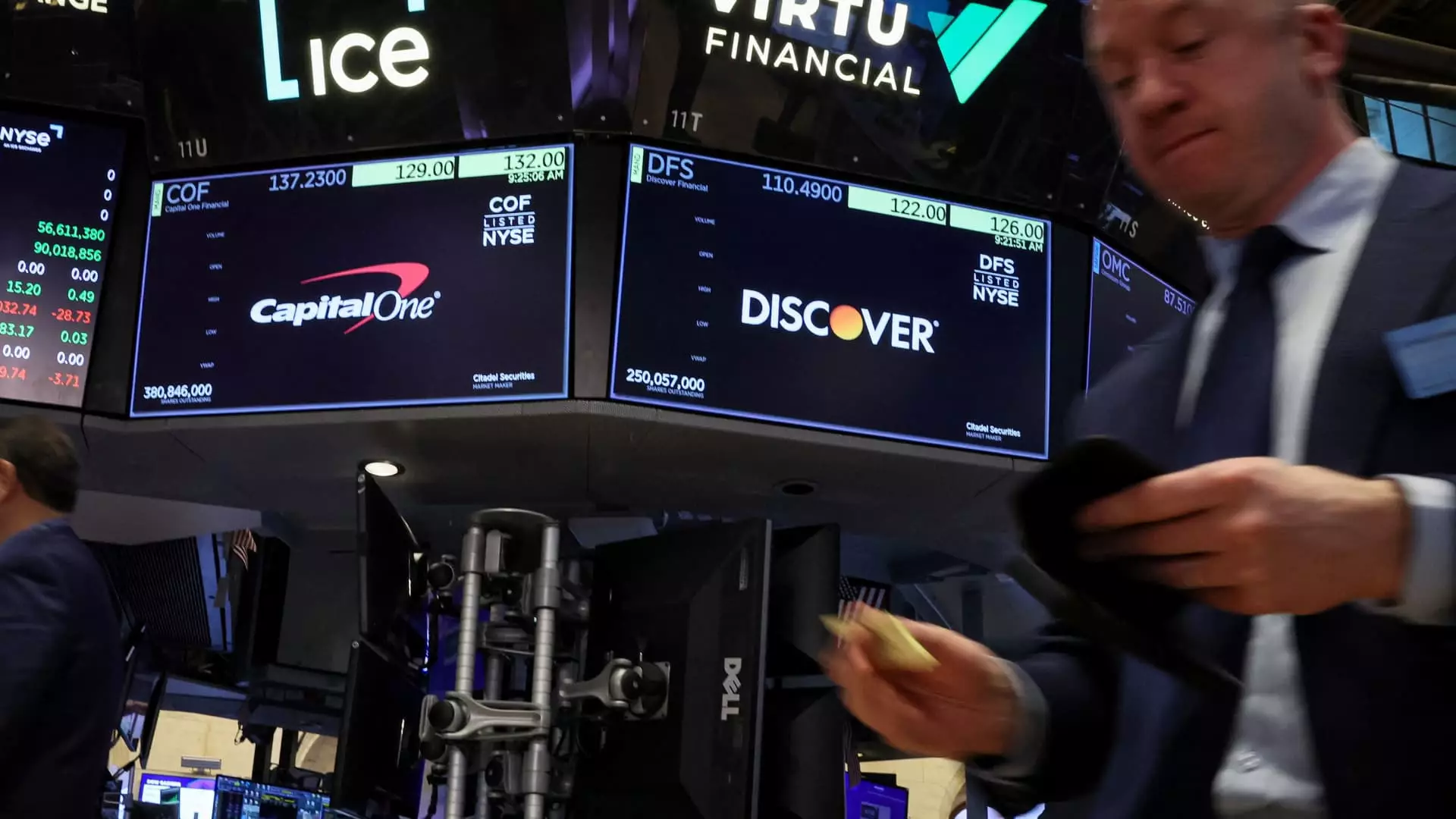Capital One’s recent achievement of obtaining regulatory approvals for its monumental $35 billion acquisition of Discover Financial signifies not just a pivotal moment for the company but an anterior shift in the American banking landscape. The green lights from the Federal Reserve and the Office of the Comptroller of the Currency provide a clear signal that the once-stifling regulatory environment is loosening, especially under the new administration. This is not merely a coincidence; it showcases a broader, more favorable outlook for mergers and acquisitions across the financial sector as regulators seem more willing to support large-scale integrations.
The implications of this, particularly for investment banks like Goldman Sachs, are profound. A thriving acquisition landscape can create a windfall in advisory revenues, and it can invigorate the once-quiet market for initial public offerings (IPOs). As the economic climate shifts and politicians recognize the urgent call for bank consolidation—perhaps to bolster competitiveness or to shield against economic headwinds—entities like Capital One may find themselves at the vanguard of a new wave of market transformations.
Economic Resilience and M&A Opportunities
Analysts at Wells Fargo have aptly dubbed this acquisition a “clearing event,” paving the way for further bank consolidations. This term captures the essence of what this deal represents—a breath of fresh air amidst uncertainties stemming from tariff disputes and economic turmoil. A successful acquisition like Capital One’s can bolster investor sentiment, offering the required earnings potential and cushion against economic oscillations. However, I would argue that we need to approach these optimistic projections with a tinge of skepticism, especially when they are rooted in an economic environment riddled with unpredictable variables.
The reality is that the merger may enhance Capital One’s portfolio, steering it toward a self-sufficient revenue model by diversifying into Discover’s robust payment network. Yet, this does not erase the concerns about the broader economic landscape. The tension created by reciprocal tariffs and the threat of recession looms large. The banking sector’s confidence, stifled by uncertainty, showcases the precarious balancing act executives face. Therefore, while investment banks may rejoice over this merger, genuine economic recovery is contingent on more than just favorable regulatory conditions.
Banking Giants and Volatility
As touted by analysts and institutional investors, the potential for increased earnings for Capital One is promising, particularly as they minimize their reliance on dominant payment networks like Mastercard and Visa. However, this optimistic outlook comes shackled to the dynamic nature of the stock market itself. Just days after the approval, despite a brief surge in Capital One’s stocks, market fluctuations rapidly reversed those gains. The association between regulatory approval and stock performance is tenuous, and placing too much faith in mere acquisition news can lead investors down a precarious path.
Goldman Sachs, for instance, has felt the sting of decreased revenues generated from its investment banking operations. Although there is excitement about Capital One’s merger, waiting for what seems to be a delayed rebound amidst ambient uncertainty poses a challenge for firms like Goldman. It’s a paradox; the volatility of the market may spur opportunistic growth through acquisitions, yet persistent economic concerns tether potential upward mobility.
Having Realistic Expectations for Growth
The future of Capital One hinges not only on successfully integrating Discover but also on navigating a complex web of challenges that come with the uncertainty of economic shocks. There’s a tangible tension in acknowledging that while Capital One’s acquisition might seem like a beacon of hope in a regulatory environment ripe for change, this may also lead to unrealistic expectations about the pace and scale of future growth.
Investors need to tread carefully, cultivating a mindset that balances aspiration with pragmatism. While acquiring Discover could enrich Capital One’s revenue avenues, we must not lose sight of the regional and global economic factors that could sour the outlook. Investment banks are not just facing an internal competitive landscape but are also weighing external vulnerabilities that are likely to disrupt the burgeoning growth projected.
The Bigger Picture Beyond Mergers
In a landscape where mergers and acquisitions take center stage, it’s vital to recognize the broader implications of this deal. Wells Fargo also stands on shaky ground, hoping to rid itself of restraints imposed due to past misdeeds. This highlights a systemic issue within the banking sector where not only does the potential for growth exist, but so does the reality of focusing improvements on regulatory compliance and risk management. The regulatory allowances being granted could pave the way for a newly revitalized sector; however, they also underscore the need for responsibility in governance as the sector reinvents itself.
This acquisition indeed marks a turning point for Capital One, setting the stage for further consolidations. However, it’s paramount that stakeholders maintain a discerning view on this high-stakes endeavor. The profitability hinges on not just lifting regulatory burdens but carefully navigating an economically volatile mosaic, ensuring that the future for these banking giants is built on sound strategies rather than fleeting optimism.

